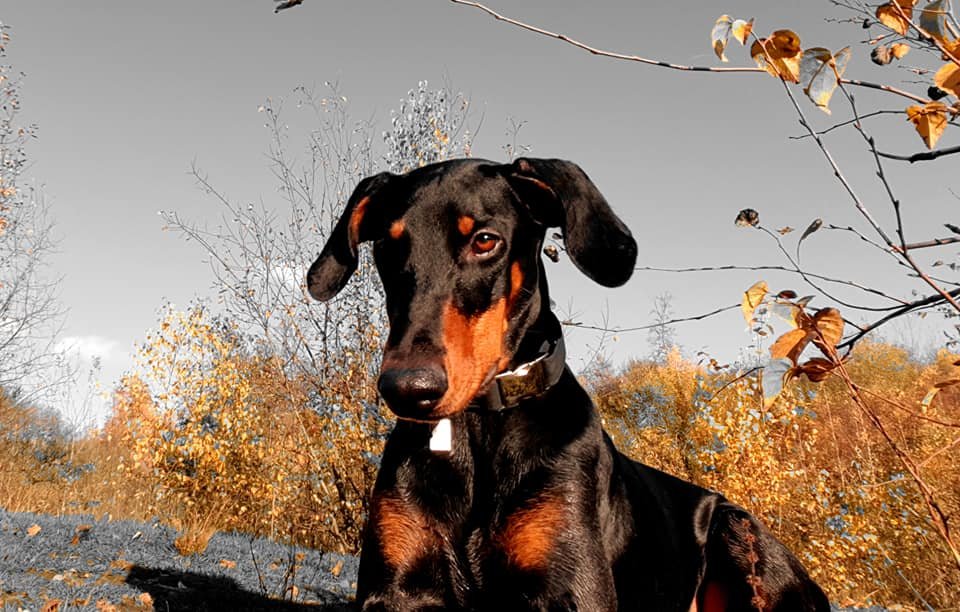
Dobermans are renowned for their intelligence, loyalty, and striking appearance. However, there are many intriguing and lesser-known facts about this remarkable breed that you might find fascinating. Here are some hidden values and interesting tidbits about Dobermans, the cuddle warriors:
1. A Tax Collector’s Creation
The Doberman breed was developed by Karl Friedrich Louis Dobermann, a German tax collector in the late 19th century. Concerned about his safety while collecting taxes, Dobermann aimed to create a loyal and protective companion, resulting in the breed we know today.
2. Incredible Intelligence
Dobermans are ranked as the fifth most intelligent dog breed, according to Stanley Coren’s dog intelligence test. They can learn commands with just five repetitions or less and obey those commands 95% of the time. Their intelligence makes them highly trainable and versatile in various roles.
3. World Record Holder
A Doberman named Sauer holds the world record for tracking. In 1925, Sauer and his handler tracked a cattle rustler for 100 miles, showcasing the breed’s exceptional scenting abilities and endurance.
4. Velcro Dogs
Dobermans are often referred to as “Velcro dogs” due to their tendency to form strong bonds with their owners and their desire to stay close. This affectionate nature makes them excellent family pets who thrive on companionship and attention.
5. A Working Heritage
Originally bred for work, Dobermans excel in roles such as police work, search and rescue, and military service. They are known for their speed, capable of running up to 32 miles per hour, and their protective instincts, which have saved countless lives in various situations.
6. War Heroes
During World War II, Dobermans were used to guard soldiers and detect mines. Kurt the Doberman became the first canine casualty in the Battle of Guam in 1944, saving numerous soldiers by warning them of the approaching enemy before succumbing to a grenade.
7. Unique Coat Colors
While black and tan is the most common coat color, Dobermans can also be found in red, blue, and fawn. These distinctive color variations add to the breed’s striking appearance and appeal.
8. Movie Stars
Dobermans have also made their mark in Hollywood. The 1972 film “The Doberman Gang” featured six Dobermans trained to rob banks. The film was successful enough to spawn two sequels and even discussions of a remake.
9. Drill Teams
Doberman drill teams were once a popular attraction, showcasing the breed’s agility and obedience. These teams performed complex routines at dog shows and public events, highlighting the Doberman’s training capabilities and enhancing their public image.
10. Adverse to Cold
Despite their athletic build, Dobermans are sensitive to cold weather due to their short coats and low body fat. It’s important to keep them warm with doggy sweaters or limit their exposure to cold environments to ensure their comfort and health.
11. Regal and Protective
Dobermans are known for their regal demeanor and strong protective instincts. While they can be gentle and loving with their family, their alertness and loyalty make them excellent guard dogs.
12. Cuddle Warriors
Despite their tough exterior and powerful build, Dobermans are affectionate and love to cuddle with their owners. They are known for being “cuddle warriors,” balancing their protective nature with a gentle and loving demeanor. This dual personality makes them unique and cherished by their families.
13. Rubber Bones
Whether you see a Doberman in action or just sleeping, sometimes it seems like they have rubber bones. Their agility and flexibility allow them to perform impressive physical feats and curl up into the most comfortable positions. This adaptability is part of what makes them such amazing athletes and companions.
Conclusion
These fascinating facts about Dobermans highlight their intelligence, versatility, and unique characteristics. Whether you’re a proud Doberman owner or considering adding one to your family, these insights can deepen your appreciation for this incredible breed.







You must be logged in to post a comment.